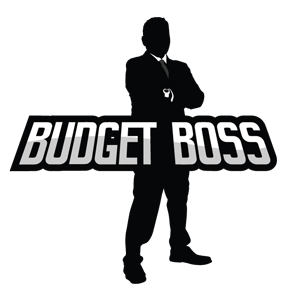Thursday, July 27, 2017
Group Retirement Plans
Welcome back to Thursday Trim the Trash Time here at Budget Boss as we roll along with Retirement Week. This week has been all about retirement and what you should know about hanging up the work shirt for good. Retirement is such an in-depth topic I could literally dedicate a whole month to the subject and still have more to say. The reason why it has become such an important topic is very simple: Most people have to plan for their retirement themselves. This has become commonplace as the employer-sponsored plans have faded away. Some estimates have employer-sponsored plans at around 21% of the private sector. That includes both Defined Benefit and Defined Contribution Pension Plans. It appears we are caught in between employers who want the government and employees to handle their worker’s retirement and the workers themselves who want the opposite. The question is: “Where does this leave you, the worker?” It seems as if you don’t get a vote on the matter so the situation then becomes crystal clear. You have to plan on your own. Yesterday I spoke about what benefits the government will provide you in retirement so today I will touch on which ones your employers may offer. This post will help you understand how to maximize your situation and plan accordingly. It can also show you want to look for in a job search.
Defined Contribution Plan (DCP)
This plan is registered with the Canada Revenue Agency and provides tax-sheltered advantages to employers and employees. The Employer will contribute a fixed amount or percentage of employee’s earnings to a retirement fund for the employee’s credit. The employee may or may not be required to contribute out of his own earnings. The accumulated value of the contributions is applied to the employee’s retirement to provide a pension income. The employee’s pension will depend on how well the funds have been invested and on pension purchase rates at retirement. Vesting limitations can require an employee to be in the pension plan for two years or more before they own the employer’s contributions. Employee contributions are tax deductible by the employee.
Costs to this type of plan include set-up fees (for registration) and ongoing administrative expenses that are paid by the employer. All expenses and employer contributions are tax deductible.
Defined Benefit Plan (DBP)
This is a plan in which the retirement pension is defined by a formula that provides a unit of benefit for each year of service. Employees may or may not be required to contribute. The employer contributes the balance necessary to fund the plan’s benefits. An actuarial evaluation is required by law at least once every three years to determine the contributions required to keep the plan financially solvent. Expense charges for this type of plan are significantly higher than those of other options.
Types of DB Plans include:
a) Best or Final-average earnings: pension is based on the member’s service and earnings over a stated period.
b) Career-Average earnings: The member’s pension for a given year of service is equal to a percentage of that year’s earnings.
c) Flat benefit: Pension is defined as a stated dollar amount for each year of service.

Group Registered Retirement Savings Plan (GRRSP)
This popular model of retirement savings is a tax-assisted, capital accumulation program for individuals. Contributions are tax-deductible within prescribed limits but fully taxable when received in the form of a benefit. Contribution limits are set based on income for the year and reduced by the assessed value of benefits accrued under an employee’s Pension Plan (called a Pension Adjustment or PA). Contributions made by employers to Group RRSP’s are not usually deductible by the company. Employees can claim this amount plus their own contributions as tax deductions.
Summary:
Defined Benefit Plan’s have become fewer and fewer as the years have gone on. For the most part, “Contribution Matching” has become the standard. What that means is that your employer will match your retirement plan contribution up to a certain amount. This percentage usually hovers in the 3-5% range but some may offer up to 8-9%, albeit rarely. Matching programs can be very useful and SHOULD always be taken advantage of. If you don’t believe me, see this example:
Age 35, $50,000 salary, 30 years of contribution (Age 65) 8% return
3% matching (Both contribute $1500 annually)
$367,037.60 at retirement ($183,518 if no matching)
5% matching (Both contribute $2500 annually)
$611,729.34 at retirement ($305,864.67 if no matching)
You have exactly half the amount you would have if you had matching if you do not take advantage of this situation. When you show those numbers it really illustrates the difference compared to showing percentages like 3%. It really doesn’t do it justice unless you show the final tally. That amount could mean the difference between retiring comfortably or not. I strongly recommend contributing the maximum your employer will match. Free money is the best kind of money in my opinion.
I also recommend going a step further. Just because your employer will only contribute 3% to match your contribution doesn’t mean that you shouldn’t put together a plan on your own. Utilizing a personal RRSP and TFSA to your advantage is crucial and can put you over the top in retirement. Every little bit helps including making sure you are debt free and building a solid investment out of the home you live in. Addressing all these areas will leave you happy and prosperous in retirement.
“Preparation for old age should begin not later than one’s teens. A life which is empty of purpose until 65 will not suddenly become filled on retirement.” – Dwight L. Moody
Email – joe@budgetboss.ca
Follow Budget Boss on – Facebook LinkedIn Twitter Instagram Pinterest Quora

